U. K.’s Last 2006 Wheat Formation – A Mayan “Lamat”?
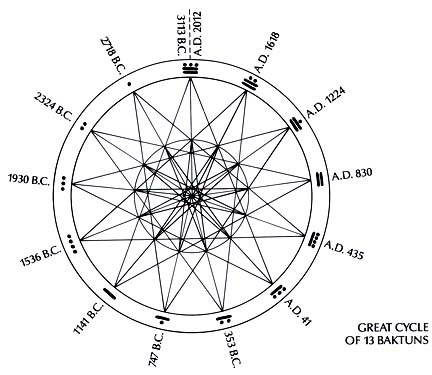
October 5, 2006 Mexico City, Mexico – The beginning of the Mayan “Long Count” or “Great Cycle” calendar is variously located between August 6 and August 13, 3113 B. C. on the Christian calendar. In Mayan chronology, the beginning date is written 13.0.0.0.0.
The “Great Cycle of 13 Baktuns” will complete on December 21, 2012, current era, and the Mayan Long Count calendar will reset to 13.0.0.0.0. A Baktun is 394 solar years. So, the change over to this current thirteenth Baktun that ends in 2012 began in 1618.
The Wars of 1618 and Now
The socio-political parallel between the beginning of this 13th Mayan Baktun in 1618 and the end of the Baktun in 2012 is eerily similar. In 1618, the Thirty Years’ War began, principally on the territory of today’s Germany, and involved most of the major European continental powers. The war was both a religious conflict between Protestants and Catholics and a rivalry between the Habsburg dynasty and other powers. One example is that Catholic France even supported the Protestant side, in its increasing rivalry with the Habsburgs. The physical fighting ended in 1648 with the Treaty of Westphalia, but the famine and disease of the Thirty Years’ War caused damage in Europe for another 300 years.
On March 20, 2003, the George Bush “dynasty” invaded Iraq allegedly to fight terrorists and provoked an even more intense religious war between Islam (Muslim) extremists and non-Islam. The Mayans expected similar past, present and future events to re-occur at certain repeating nodes in the cycles of time.
Jose Arguelles wrote in his 1987 book, The Mayan Factor:
“Like the Buddhist and Hindu cosmologies, the Mayan describes a universe of infinite cycles of time and being. If anything, the Mayan is even more precise in its computations of these cycles. In any case, the contemplation of the far-ranging and all-encompassing cycles inevitably led to a consideration of the fact that we are not alone, that infinite other world systems exist more evolved than that of our own system.”
Three Mayan Calendars
The Mayans were obsessed with time and kept three calendars going simultaneously: 1) the Long Count; 2) the Tzolkin, or Sacred Calendar; and 3) a solar calendar called Haab. The Long Count has ticked away time through 13 Baktuns of 394 years each; the Tzolkin was used to keep track of 260 days in 20-day increments in an endlessly repeating cycle; and the Haab counted out 365 days of the Earth’s revolution around the sun.
Lamat Symbol in the Tzolkin Calendar
It is in the Tzolkin that the Lamat symbol appears. Jose Arguelles wrote:
“The Tzolkin is generally considered as the 260-day Sacred Calendar – the numbers one through thirteen repeating twenty times in conjunction with twenty Sacred Signs – in actuality it is much more. Taken as a grand calendar, the Tzolkin describes the Mayan Great Cycle, or Hologram of Time.” Arguelles also recognized the Tzolkin’s similarity to the Chinese I-Ching, which is allegedly synchronized with the spiral DNA of genetic code. “While the I Ching is precisely synchronized with the genetic code, the Tzolkin is synchronized with the galactic code.”
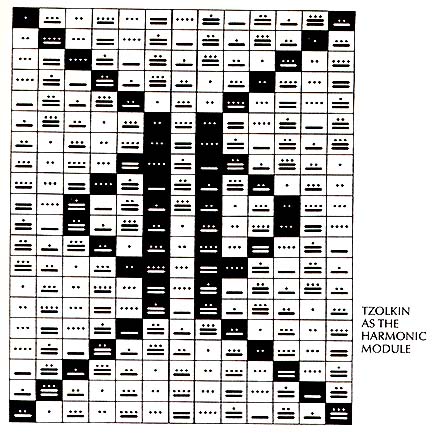
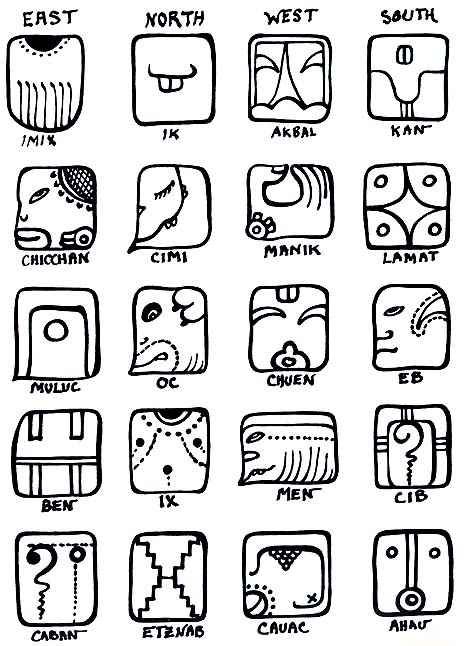
Arguelles wrote: “…the twenty Sacred Signs (in Tzolkin) are reciprocal. They build on each other and reference each other for meaning. Also, a certain meaning is also gained by their relation to each other in the order in which they invariably appear. …In this presentation, the Signs describe a process of development, the path of life itself. The first seven Signs represent the cycle of the lower body or physical being, while the remaining thirteen Signs describe the evolution of the higher mental body.”
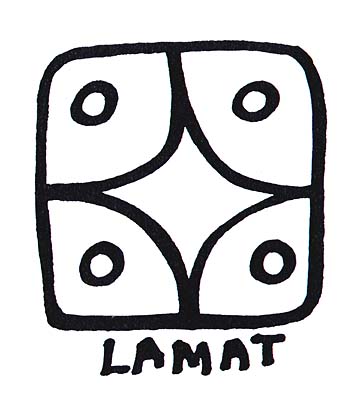
What did this symbol literally mean to the Mayans? “Star,” often the planet Venus. Venus was a major player in the Tzolkin. Mayan astronomers even calculated correctly its synodic period as 584 days.
[ Editor’s Note: The synodic period is the time that it takes for the object to reappear at the same point in the sky, relative to the Sun, as observed from Earth; i.e. returns to the same elongation. This is the time that elapses between two successive conjunctions with the Sun and is the object’s Earth-apparent orbital period. The synodic period differs from the sidereal period since Earth itself revolves around the Sun.]
Mayan Obsession with Cycles of Time
The Mayans honored 52-year-cycles as sacred and in two 52-year-cycles – or 104 years – Venus makes 65 revolutions back to where it started – another cycle for the Mayans to track and celebrate.
L F Rodriguez, wrote in a 1985 report entitled “Astronomy Among the Mayans” for Rev. Mexicana Astronom. Astrofis. 10: “The Mayan concern for understanding the cycles of celestial bodies, particularly the Sun, the Moon and Venus, led them to accumulate a large set of highly accurate observations. An important aspect of their cosmology was the search for major cycles, in which the position of several objects repeated.”
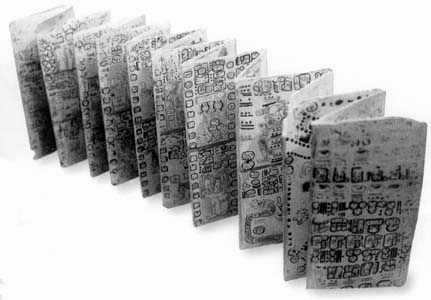
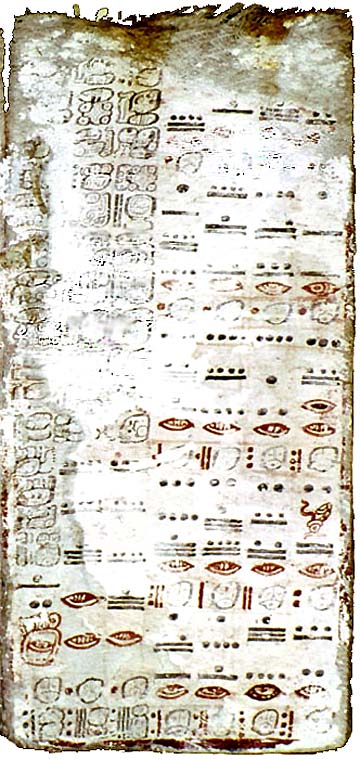
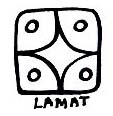
Prior to 800 A.D., at the Caracol ancient observatory in Chichen Itza, the Mayans calculated the synodic period of Venus to be 584 days. At least 1,400 years ago, Mayan scientists accurately calculated the length of Earth’s annual revolution around the Sun to be 365.242 days. Our modern astronomers say it is 365.242198 days. Other Mayan astronomers found that 149 lunar months lasted 4,400 days which meant that a lunar month was 29.5302 days. The modern day calculation is 29.53059.
Jose Arguelles wrote in The Mayan Factor: “On certain of their monuments, we find the recording of dates and/or events occurring as much as 400 million years in the past. All of this they did with a unique and incredibly simple, yet flexible, numerical system that counted by twenties instead of tens and used only three notational symbols – dots, lines and an oval (shell shape?) for zero. Why? And to what end?”
That use of zero and extraordinarily accurate astronomical calculations provoked archaeologist Sylvanus Griswold Morley in 1935 to say about the Maya:
“When the material achievements of the ancient Maya in architecture, sculpture, ceramics, the lapidary arts, feather-work, cotton-weaving and dyeing are added to their abstract intellectual achievements – invention of positional mathematics with its concomitant development of zero, construction of an elaborate chronology with a fixed starting point, use of a time-count as accurate as our own Gregorian Calendar, knowledge of astronomy superior to that of the ancient Egyptians and Babylonians – and the whole judged in the light of their known cultural limitations, which were on a par with those of the early Neolithic Age in the Old World, we may acclaim them, without fear of successful contradiction, the most brilliant aboriginal people on this planet.”
Mayans – From A Larger Galactic Community?
Aboriginal? Jose Arguelles argued in The Mayan Factor that the probable source of the Mayan civilization was extraterrestrial and that all the brilliant astronomical and calendar knowledge had one mission: “This mission, it seems, was to place the Earth and its solar system in synchronization with a larger galactic community. …The key and the code left behind by the Classic – or shall we say the galactic – Maya describing their purpose and their science is embedded in the deceptively simple system of thirteen numbers and twenty symbols called the Tzolkin.”
Arguelles’s hypothesis was that the Maya perceived resonant frequencies symbolized in their glyphs and cyclic counts. Their knowledge was not confined to the Earth. Arguelles described resonant frequencies driving the cosmos, from the Mayan point of view, and a key to the evolution of this solar system and Earth is the frequency of the galactic core. The Tzolkin, Arguelles said, was “spinning through its endless fractal harmonics and overtone permutations. …what we find recorded on the great stone monuments and certain of the extant codices, or painted manuscripts, is actually the skill the Maya demonstrated in showing the relation between the galactic harmonic and the annual cycles of the Earth, Moon, and other planets of the solar system” – especially Venus, the Lamat, the eighth symbol in their 20-count in the Tzolkin.
And it is the Lamat Cycle which concludes the last twenty years of the Mayan Long Count calendar from 1992 to 2012. It is in this period that the Earth can either transform in Armageddon annihilation or “a galactic synchronization with the beyond.”
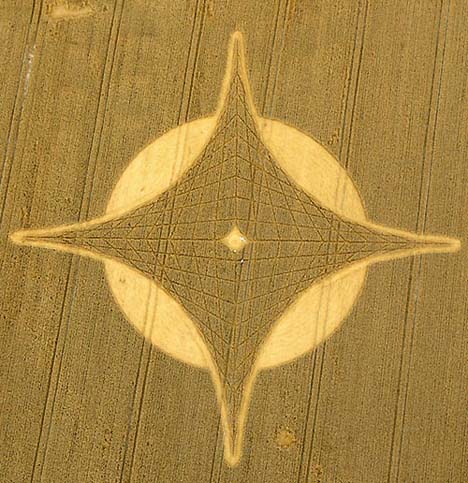
Interview:
Jaime Maussan, Investigative Reporter, Jaime Maussan Productions, Mexico City, Mexico: “As you know, I went to England because I was expecting that these messages that we have found in the month of August would happen again, as it happened in 2004 and 2005 – with the so-called ‘Mayan messages.’
For that reason, I thought that something was going to happen and we were expecting a significant Mayan-type formation. I went with a group of Mexicans, who stayed in Wiltshire from August 5 to 15. Unfortunately, they did not have a chance to see this Lamat formation because they left before we knew this had happened.
But I decided to stay because I was very confident that something would happen, that we could have a message. For that reason, on the morning of August 15, after I heard a rumor that there was a new formation at Etchilhampton, I went there with an Englishman, a crop circle hunter, Tony Cook.
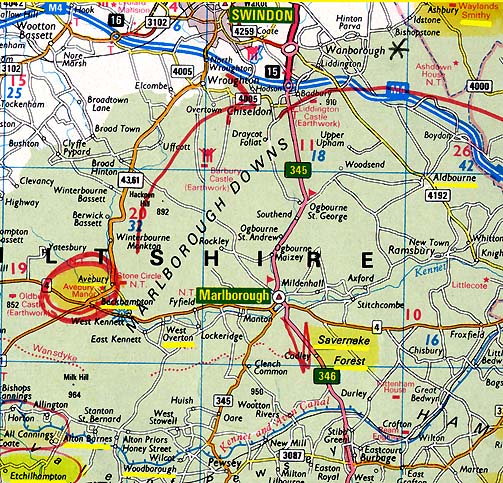

We were the only ones there and we did not realize on the ground what was so extraordinary from the air. But the formation on the ground was the purest and most delicate that I have ever seen. All those many thin lines! We could not imagine what it was, but we saw thin lines. That’s why I thought it was also going to be a 3-dimensional formation.
WHAT WAS THE WIDTH OF THOSE LINES?
The width of those thin lines were probably five to ten inches, no more than ten inches wide. It’s impossible to walk in them and to make those kind of lines without leaving a trace, a path – I don’t think it’s possible. It was so perfect. The perfection and complexity of this formation was really amazing.
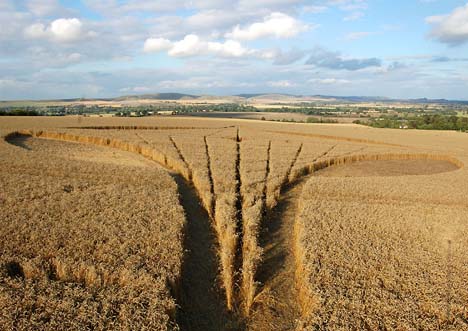


Then that day, I went up in a plane. We still did not know exactly what the pattern was, but we thought it could be connected to the Mayans. And then the next day at The Silent Circle Café we found in a Mayan calendar all these symbols of the Tzolkin sacred calendar. It has 20 different signs for 20 days that keep repeating in a cycle for 260 days.
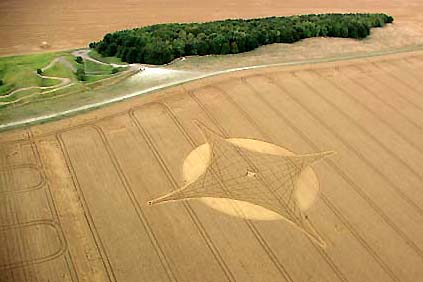
Lamat is the first and last symbol in the Dresden Codex, in the Table of Eclipses. It starts with a Lamat day and will finish with a Lamat day. The last Lamat day we have in that table is May 19. We have to remember that in the calendar formation that we had last year (2005) at Wayland’s Smithy, right in the center was an eclipse, a partial solar eclipse. We also found an arc and this arc means zero. The zero in the horoscope of the Mayan is May 20.
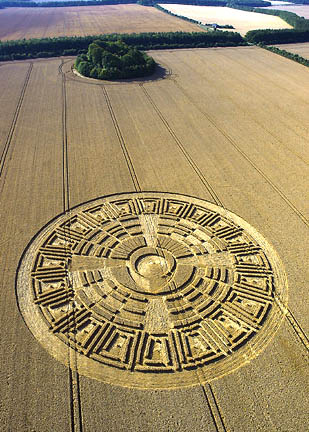
Annular Solar Eclipse of May 20, 2012
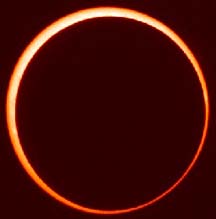
[ Editor’s Note: An annular eclipse occurs when the Sun and Moon are exactly in line, but the apparent size of the Moon is smaller than that of the Sun. Hence the Sun appears as a very bright ring, or annulus, surrounding the outline of the Moon. ]
That day the moon, Earth, the Sun, the Pleiades will be aligned and we will be, according to the Mayans, in direct alignment with the center of our galaxy. For that reason, it is a very important astronomical day. We found that eclipse date in the 2005 Wayland’s Smithy formation. For that reason, my geologist friend, Calderon, considers that this Etchilhampton message is related to the message at Wayland’s Smithy. He is considering that Lamat is probably the sign of the change of the era, the end and beginning of the new era. According to codex information, the transition of the Lamat end of the big calendar will start with the solar eclipse on May 20, 2012. And we know that the calendar of the Mayan will finish in December.
We also have to remember that we are moving toward a very big cycle of the Sun, the Solar Maximum. According to many scientists around the world, this one is going to be spectacular, very strong. We have to remember the Mayan prophecies told us that the Sun, would more or less take out of balance all the natural systems of the Earth. This would change the conditions of the Earth and our civilization.
I don’t believe this is going to be the end of Earth or human beings. I think it is going to be a big change and I think the Mayans tried to say that a long time ago. I don’t know if they thought we were going to be here and they did it for us (later generations)? Or they did it for themselves? But somehow, they knew of these cycles of the Sun and for some reason, they thought this day, May 20, 2012, is going to be a very important day.
We will also have the transit of Venus across the Sun then on June 5 to 6, 2012. For many investigators, Lamat also represents Venus and Calderon believes that this Lamat at Etchilhampton is a message related to the end of the Mayan calendar and the very important upcoming transit of Venus. For the Mayans, astronomical events were decisive, were somehow designed for the change (of eras). Caldron believes that the Etchilhampton and Wayland’s Smithy formations are related to each other and he expects more in the next year (of 2007).
Calderon also thinks the Lamat symbol in Mayan means ‘deep,’ deep inside you. It means you can make an introspective trip into yourself, and there you will find respect and love for yourself. Through that, you can find love for others, the tolerance and compassion. That’s more or less what Lamat means – it’s a new era or change when human beings are going to learn to respect themselves and through that, respect others and be more compassionate and tolerant.
We believe that this is going to mark the end of an era, the end of old values and the beginning of new values. We believe it’s somehow announcing a new human being. At this wars around the world moment, it seems almost impossible, but this is what the old Mayan civilization left us to know. We will all observe this happening. Right now, we know that whoever is doing these formations in England is using this knowledge to remind us about that and these two symbols try to give us information about something they know, or they share with the Mayans about the future. We should be very respectful of this and should observe what is going to happen in the future.
WHY IS IT THAT MAYAN GLYPHS WOULD BE PUT DOWN IN ENGLAND AND NOT IN MEXICO?
That’s a very good question, but I don’t know. The formations in England are not being done by the Mayans. They are being done by some intelligence, which is using the Mayan symbols, because we understand the Mayan symbols, to impart information. These are real messages and I think the crop formations are probably one of the most important things happening in the world.
WHY DO YOU THINK IT IS IMPORTANT FOR HUMANITY TO BE GIVEN NOTICE ABOUT WHAT IS GOING TO HAPPEN IN 2012, EVEN THROUGH THE MAYAN CALENDARS?
It seems as the Mayans knew we are going to have a (Solar Max) cycle of the Sun that could change conditions on the Earth at this time. They knew about the Sun, the cycles of the sunspots, about the moon, the cycles of the moon.
We don’t know yet who the Mayans really were with all their knowledge, or how old they really were. Perhaps they were much older than we think. Perhaps they came from somewhere else off planet? I don’t know. Where did they get all their knowledge? We should be more interested in that.”
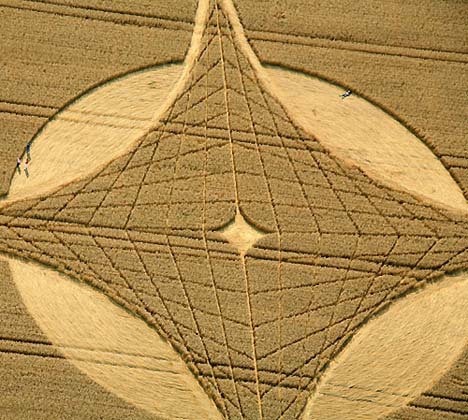
NASA Information
The annular solar eclipse of May 20, 2012, will be visible across southeast Asia, the north Pacific, and the southwest USA. The annular phase runs from 22:06:17 UT on May 20, when the eclipse begins in the Gulf of Tongking, to the end of the eclipse in Texas at 01:39:11 UT on May 21. The maximum eclipse is at 23:52:47 UT on May 20, when the annular phase will last over 5½ minutes.
While this eclipse has a very wide path and long durations, this means that the Sun will not be darkened as much as by a shorter-lasting eclipse; and as with any annular eclipse, this eclipse is never safe to view with the naked eye.
The partial eclipse will be visible over most of Asia, Russia, and northwestern North America between 20:56:07 UT on May 20 and 02:49:21 UT on May 21. The following maps show the approximate path of the annular eclipse.
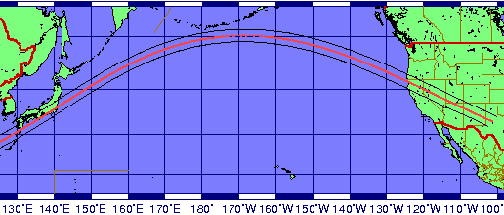
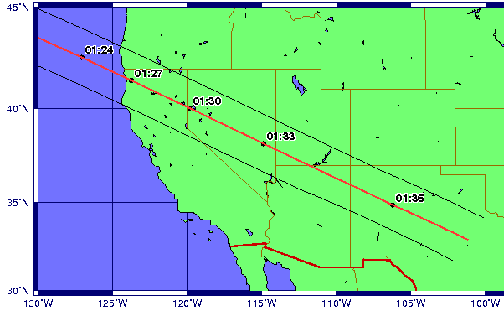
More Information:
For further information about Mayan and Aztec-related crop formations, please see reports below in the Earthfiles Archives. For other crop formation images and information, please see Mysterious Lights and Crop Circles and Glimpses of Other Realities, Vol. I: Facts & Eyewitnesses in the Earthfiles Shop.
- 08/15/2006 — Three Crop Formations Near Uffington White Horse – A “Merkabah?”
- 07/21/2006 — 17 Crop Patterns Reported Between July 4 – 20
- 09/02/2005 — “Mayan Clock”? in August U. K. Crop Formations
- 01/03/2005 — Audience Feedback About Mayan and Aztec Calendar Links
- 08/04/2004 — Silbury Hill Design and Aztec God, Xochipilli
- 06/02/2004 — 2004 Peach Orchard, Arkansas Crop Formation
- 10/19/2002 — Shifting Time Lines and Earth’s Destiny?
- 06/11/2000 — Two New Crop Formations at Silbury Hill
Websites:
Archaeological Mind: http://www.enter-the-past.org/article/mayan-mathematics-part-3
Maya Civilization: http://archaeology.about.com/od/mayaarchaeology/
Foundation for the Advancement of Meso-American Studies: http://www.famsi.org/mayawriting/dictionary/montgomery/l/t510.htm
Mayan Mathematics:
http://www-groups.dcs.st-and.ac.uk/~history/HistTopics/Mayan_mathematics.html
NASA Annular Solar Eclipse of May 20, 2012: http://sunearth.gsfc.nasa.gov/eclipse/SEgoogle/SEgoogle2001/ASE2012google.html
© 1998 - 2020 by Linda Moulton Howe.
All Rights Reserved.
https://www.earthfiles.com/2006/10/05/u-k-s-last-2006-wheat-formation-a-mayan-lamat/
















